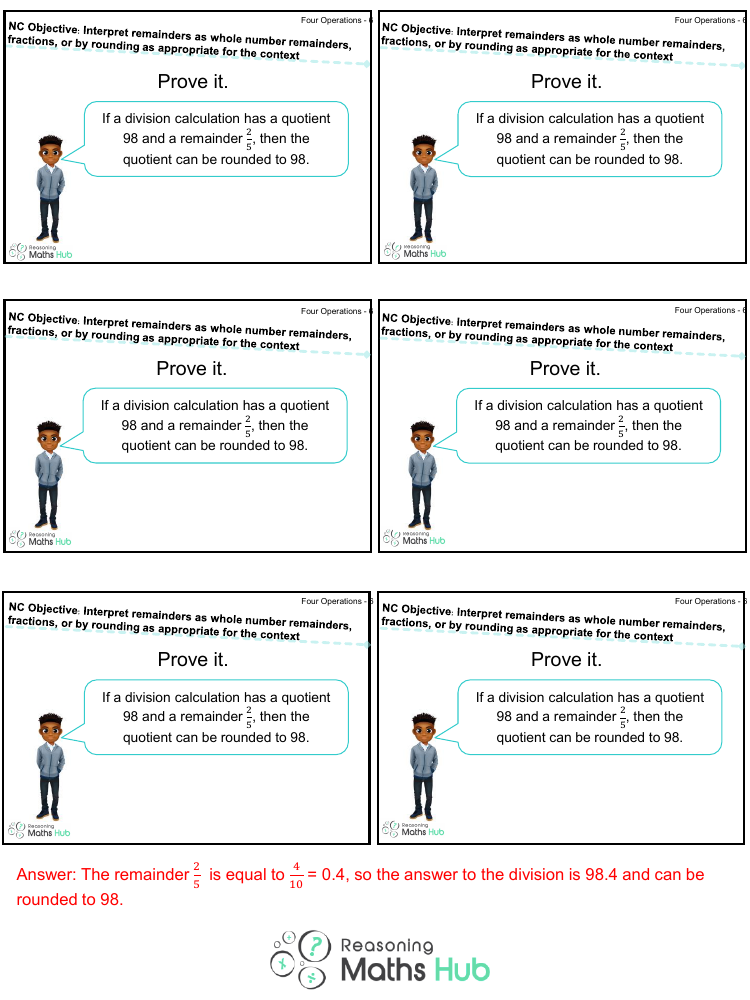Remainders as whole number remainders, fractions, or by rounding as appropriate for the context - Reasoning

Maths Resource Description
In the realm of arithmetic, particularly division, the concept of remainders is crucial. When a division calculation results in a quotient of 98 with a remainder of 2/5, it's important to interpret the remainder correctly within the context. The remainder 2/5 can be expressed as a fraction or converted to its decimal equivalent, which is 4/10 or 0.4. This means that the complete answer to the division is not just 98 but 98.4. However, depending on the context and the level of precision required, this result can be rounded to the nearest whole number. In this case, since 0.4 is less than 0.5, the number 98.4 can be rounded down to 98.
To prove the rounding decision, one can look at the rules of rounding numbers. If the decimal part is less than 0.5, the number is rounded down. Conversely, if it's 0.5 or more, the number is rounded up. Since the decimal part here is 0.4, which is less than 0.5, the correct approach is to round the quotient down to 98. This approach is appropriate when the context calls for whole number answers or when the level of precision required allows for rounding down. Therefore, the quotient of 98 with a remainder of 2/5 validates the rounding of the complete division result to 98.